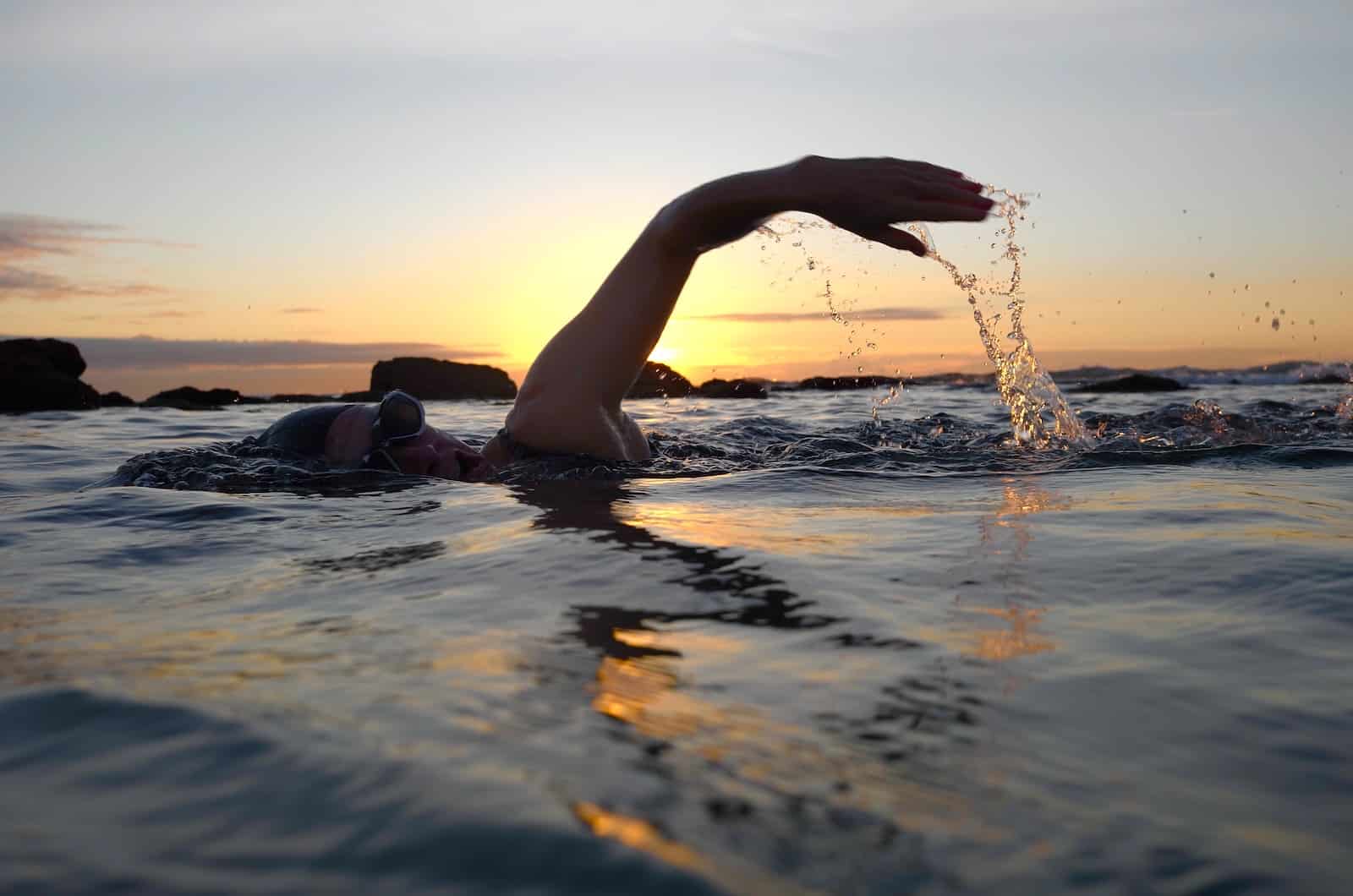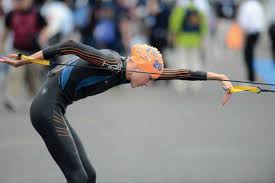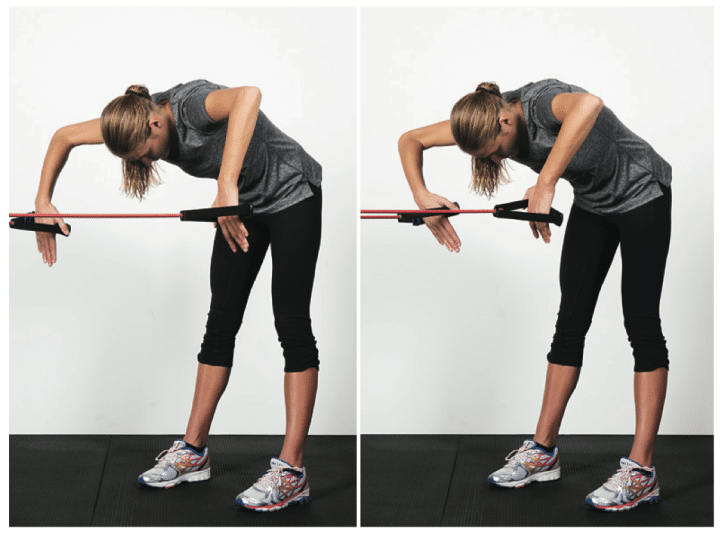Stretch Cord Swim Training

Stretch cords can be an effective tool to help retain parts of your swim fitness during the off season or in our current pandemic climate with COVID-19. As a result stretch cord training helps you to maintain some swim specific strength and efficiency, conditioning muscle groups and mimicking freestyle movements, making the transition back to the water much easier.
Although it lacks the dynamic nature of pool swimming, stretch cord training, can be designed so that the workouts included a lot of variety, as well as targeting specific elements of the swim stroke.
There are multiple benefits to using stretch cords during your downtime, or even supplemental to normal swim training.
The learning curve with swimming stretch cords is short.
Unlike lifting, which requires careful coaching and supervision, particularly for novices, adding stretch cords to your dryland doesn’t require a lot of instruction.
As swimmers you should already know the basics of the pulling motion; all you have to do is replicate that with the cords. Unlike weights, stretch cords are relatively safe.

Technical corrections can quickly be made.
Unless you are under constant observation, or having video swim analysis it’s not always possible to get a great look at your pulling motion.
With stretch cords you as a swimmer are solely focusing on the pulling motion, and inefficiencies in the stroke can be corrected.
Training with stretch cords is specific to what you are trying to do in the water.
The greatest advantage of resistance tubing is that we are performing an exercise that closely mimics what we are doing in the water. The closer our dryland activities match up to what we want to accomplish in the water the better.
A number of studies have found that a general dryland program alone doesn’t always result in faster swimming performance. Researchers in one study surmised that it was a lack of specificity in the dryland training.
From a swim technique point of view, there are various things that you can do. The important thing to remember is that if you can get the 3 fixed points of the stroke reasonably strong, then everything else becomes more transferrable. In all swim based exercises, the more that you can get your torso bent over – closer to horizontal – the more “normal” the exercise becomes.
Catch/Full extension
Reaching forward keeping a straight line from your hip to shoulder and forward to your hands, and making sure that your fingertips are just below your wrists.
Midpoint
Getting your forearms vertical, with your hands below your elbows; you can practice that midpoint scull, and you can also get used to feeling pressure and pulling from your forearms by holding your cords on the forearms rather than on your hands.

Exit/Finish
Focusing on making sure that your hands face backwards all the time, you can ensure that your hands brush all the way back past your thighs. As above, you can also practice that exit point scull position, arms fully extended back at the elbow.

Here are a couple of “main set” options that you could try. In all cases, you can adjust the tension that you are working with – to make it more challenging or alternatively to make it easier to maintain good form throughout. If you have varying options of cords then that is great, but alternatively standing closer to or further from the anchor point.
Workout 1
Drill set: 4 x drill set – steady stroke rate
30 sec catch sculling. Focus on the hand placement, arms extended forward, elbows slightly bent and hands creating a figure 8. Keep constant pressure on the cord. Rest for 10 seconds.
1 min continuous freestyle. Rest 10 seconds. Focus on high elbow during the catch phase but a low elbow recovery.
30 sec mid point sculling. Focus on keeping hands below the elbows, squeezing your hands in and out, turning your palms to push against the cord. Maintain constant pressure on the cord. Rest for 10 seconds
1 min continuous freestyle. Rest 10 seconds. Focus on high elbow during the catch phase but a low elbow recovery.
Main set: 4 x swim set – steady stroke rate
Double Arm Stroke — 10 complete strokes. Rest 10 seconds. Focus on keeping the elbows high during the catch
Continuous Freestyle with high elbow catch – 1 minute. Focus on keeping the elbows high during the catch phase
Rest 30 seconds
Workout 2
Drill set: steady stroke rate
8 x 30 strokes, alternate sides, hip touch drill. Start under the shoulder and push back toward the thigh. Focus on the hand placement and extending the thumb to touch your hip as it passes. Rest for 10 seconds
4 x 1 min continuous freestyle. Rest 10 seconds. Focus on touching your thigh/hip
Main set: 3 x swim set – steady stroke rate
Left Arm – 10 complete strokes.
Right Arm – 10 complete strokes.
Double Arm Stroke – 10 complete strokes.
Rest 10 sec
1minute continuous freestyle touch the hip with an extended thumb the last 30 sec. High elbow recovery.
Rest 30 sec
Workout 3
Drill Set: – steady to high stroke rate
3 rounds of 30 strokes as single arm stroke (15 each side) for each drill below, rest 10 sec after each drill, focusing on the following:
Drill 1: Focus on a high elbow during the catch and pull.
Drill 2: Focus on hand placement and thumbs touching the hips.
Drill 3: Focus on high elbow during the catch and pull while acceleration throughout the stroke.
Main set: – steady to high stroke rate
4 x swim set
Double Arm Stroke – 10 complete strokes. Rest 10 sec. Focus on a slow catch and fast finish past the hip. Accelerating throughout the stroke.
Left Arm – 10 complete strokes. Accelerating throughout the stroke.
Right Arm – 10 complete strokes. Accelerating throughout the stroke.
Rest 30 sec
4 x swim set
1 minute continuous freestyle. Focus on keeping the elbows high during the catch and pull. Increase to a high turnover the last 30 seconds of each 1 min interval.
Rest 10 sec
If you have any questions or comments, please feel free to get in touch; either by email, Facebook or leave a comment on here! Remember, you can always get your swimming reviewed in the endless pool with our video swim analysis packages.
